Greek Revival and Gothic Revival were two of the most popular architectural styles used in America’s homes before the Civil War. Many of these still stand, and can be easily found all over the eastern half of our country, and their popularity endures today. While I am admirer of both, there was a less common architectural style from the same era that I feel deserves a second look, Egyptian Revival. This style enjoyed a brief vogue, but never enjoyed the acclaim of its greek and gothic brethren. Hence, it is relatively rare to find surviving examples.
Though Egyptian motifs and themes were used earlier, the style really caught on after Napoleons invasion and occupation of Egypt in the late 18th and early 20th centuries. Soon Egyptian motifs found their way onto jewelry, furniture and architecture. Obelisks, lotus-topped columns and slanting sidewalls entered out architectural vocabulary. Although there were a number of well-known buildings built in the style, they tended to be institutional or public buildings. 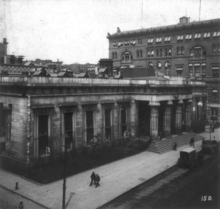 The Tombs, New York City (demolished)
The Tombs, New York City (demolished)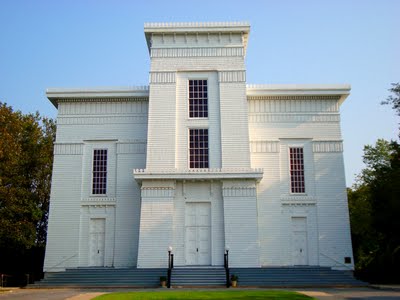
Beyond a question of aesthetic merits, I can arguably see why, based on psychological associations. The mathematical proportions of Greek architecture and its allusions to the world’s first democracy appealed to the principles of our young republic. The Doric order was well suited to those whose taste veered towards the classic and sober, while the Corinthian option offered something for those who craved something a little fancier. Sitting under a temple fronted porch, thinking of classical statuary of gods and goddesses, with their muscular and voluptuous bodies negligibly draped, might have fueled the erotic fantasy of more than one repressed nineteenth century mind, in a world bereft of pornography.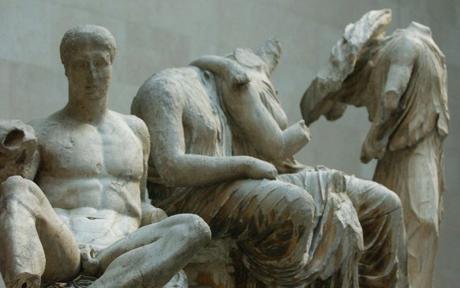
The gothic revival style offered an alternative to those who decried symmetry and rationalism. The arches and verticality of its elements pointed to god and a higher place. Championed by Downing and Davis, the style was seen as suited to the romantic landscape movement. The Anglo-Saxon population could be reminded of the churches and castles of England and Scotland, lands from which their ancestors came. If the fantasy of sitting half-naked, covered with a fig leaf and sporting a laurel wreath on ones head might prove too much for some, visions of Camelot and Ivanhoe, chivalry, knights on white horses and maidens fair could more than suffice.
What did Egypt have to offer by comparison? After twenty years, no one could still fully decipher that damned Rosetta Stone, and who wanted to picture themselves as a stiff, awkwardly posed figure with eyes on the side of their head?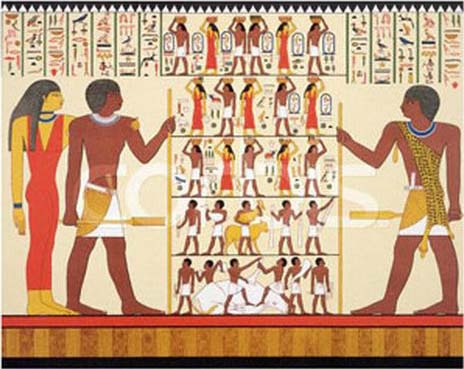 Sure, Cleopatra was a hottie, but she also played with snakes, and look where that got her? That, and the fact the most recognizable examples of Eyptian Architecture were in fact tombs may account for its relative and enduring popularity in cemeteries.
Sure, Cleopatra was a hottie, but she also played with snakes, and look where that got her? That, and the fact the most recognizable examples of Eyptian Architecture were in fact tombs may account for its relative and enduring popularity in cemeteries.
Although I doubt any of these hypotheses would stand up to academic scrutiny, I do wonder what our architectural landscape would look like had more people wholeheartedly embraced the Egyptian Revival style for their homes. One may get clue by comparing the following two houses; the first is located in Hudson New York, and the second is the Elizabeth Apthorp house in New Haven, Connecticut.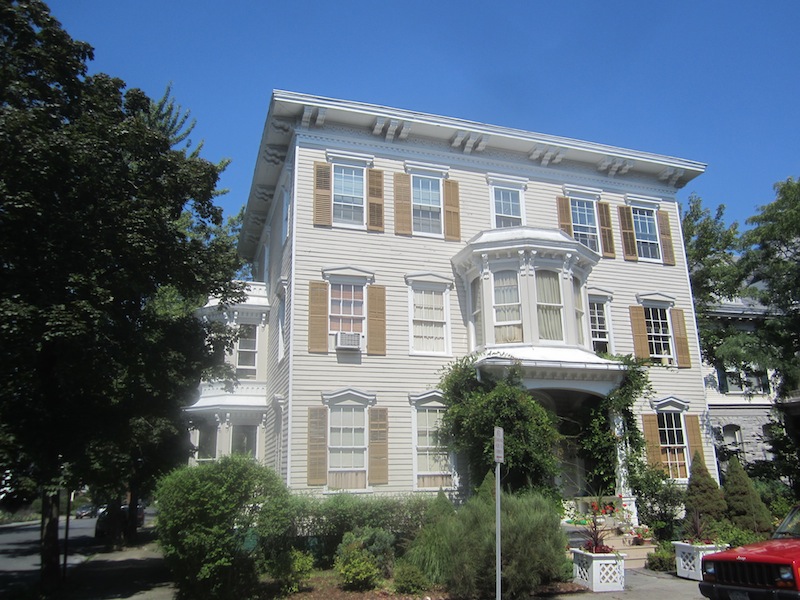
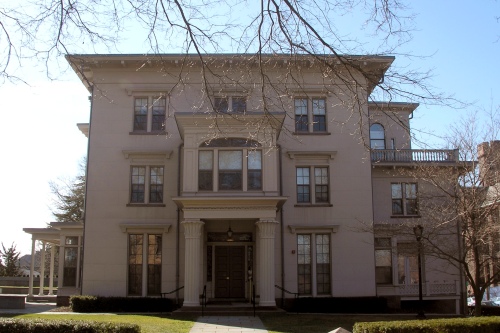 Apthorp House in New Haven, CT While their proportions and scale are similar, the Apthorp House sports Egyptian Revival elements, which lend it an air of dignity and gravitas without being overbearing or heavy in my opinion. A house found on Allen Street in Hudson New York (literally around the corner from the earlier example), has Egyptian revival lotus capitals on its porch columns.
Apthorp House in New Haven, CT While their proportions and scale are similar, the Apthorp House sports Egyptian Revival elements, which lend it an air of dignity and gravitas without being overbearing or heavy in my opinion. A house found on Allen Street in Hudson New York (literally around the corner from the earlier example), has Egyptian revival lotus capitals on its porch columns.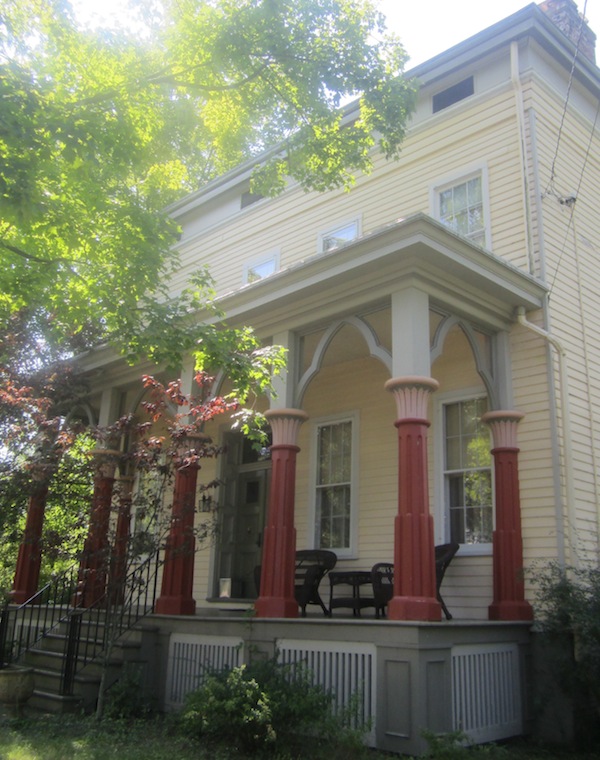 House on Allen St, Hudson, NY The columns, accentuated by a contrasting color scheme create a very pleasing effect (note that the builder or designer “hedged their bets” and placed gothic arches above them, as if reluctant to fully commit to the style). A little farther a field in Cooperstown New York, the “Oh so” Greek Revival Woodside Hall is graced with a small Egyptian Revival gatehouse.
House on Allen St, Hudson, NY The columns, accentuated by a contrasting color scheme create a very pleasing effect (note that the builder or designer “hedged their bets” and placed gothic arches above them, as if reluctant to fully commit to the style). A little farther a field in Cooperstown New York, the “Oh so” Greek Revival Woodside Hall is graced with a small Egyptian Revival gatehouse.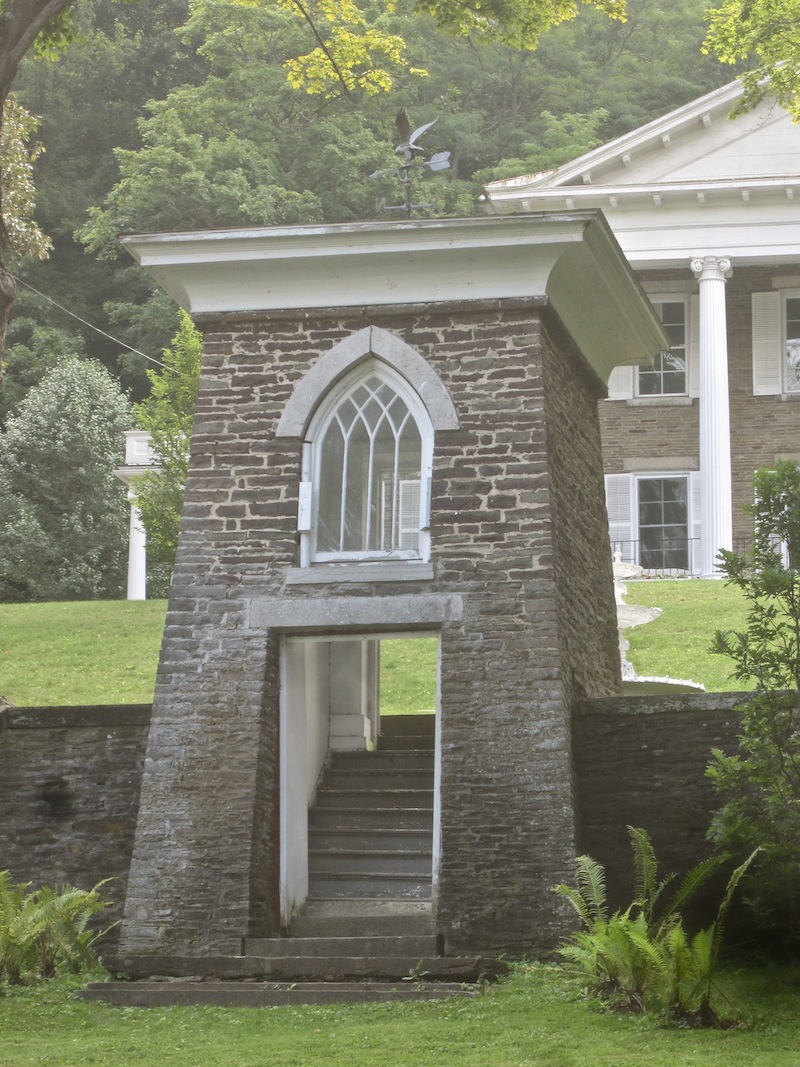 Gatehouse at Woodside Hall, Cooperstown, NY The structure adds a touch of exoticism to the house above, without detracting from or competing with it. With its gothic arched window above the doorway, it also serves as evidence that, under skillful hand, the Greek, gothic and Egyptian revival styles could all play nicely with each other. It makes me wonder why it didn’t happen more often?
Gatehouse at Woodside Hall, Cooperstown, NY The structure adds a touch of exoticism to the house above, without detracting from or competing with it. With its gothic arched window above the doorway, it also serves as evidence that, under skillful hand, the Greek, gothic and Egyptian revival styles could all play nicely with each other. It makes me wonder why it didn’t happen more often?



